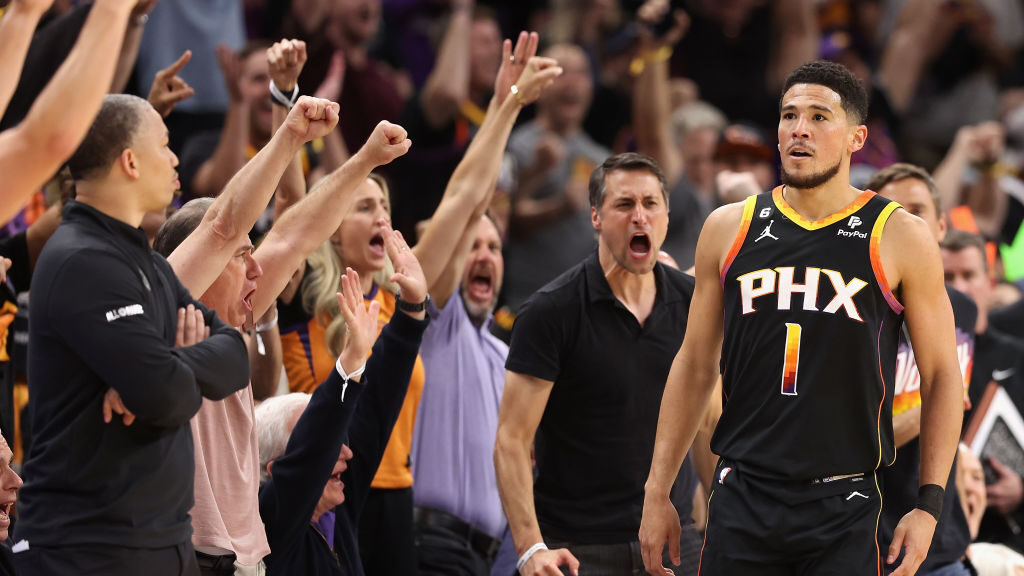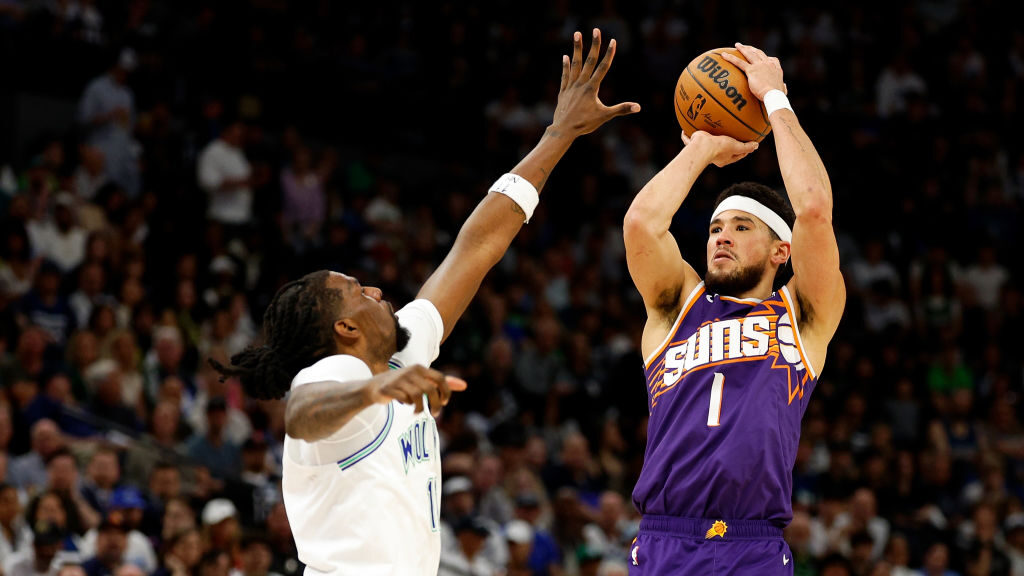Clippers can keep trusting the math after giving Suns’ stars their props
Apr 19, 2023, 12:08 AM | Updated: 2:45 am
PHOENIX — The Los Angeles Clippers want to win the math battle.
They have succeeded two games in a row at keeping the Phoenix Suns from scoring close to the rim. They know if they beat Phoenix at the free-throw line and from three, their chances are good.
Their first-round series is tied 1-1 after the Suns flipped an uncharacteristically poor midrange shooting in Game 1 into a masterful effort for a 123-109 win in Game 2 on Tuesday at Footprint Center.
“Booker, KD and CP,” Clippers coach Ty Lue said, explaining why Phoenix shot a bonkers 58.8% for the game. “Thought they really did a good job of just controlling the game. In that second half and fourth quarter, they really took over. We tried to blitz (sending the big aggressively on pick-and-roll ball handlers), we tried to fire (early trap before the screen), we did a lot of different things.
“They were down 1-0 and their stars came to play tonight.”
Phoenix shot 22-of-30 from outside the paint out to the three-point line.
That translates to 73.3% in the area of the floor that the math says is the least efficient space on the court, NBA-wide. Of course, these Suns are not built like NBA averages.
Devin Booker dropped 38 and nine assists thanks a lot to an 18-point third quarter. Kevin Durant scored a steady 25.
But little spurts from Deandre Ayton in the second (14 points, 13 rebounds) and Chris Paul (16 points, eight assists) in the fourth should not go unnoticed.
“In the first half, I thought we did a good job of our bigs being up (on screens), and then Ayton, he kind of got going, he made four or five of them,” Lue said. “And then we backed up, then Book and KD and CP got going.”
Ultimately, the series could be an early blessing in disguise for a Suns team with championship aspirations.
The team they are playing remains confident in what it’s doing.
The Clippers, like they did two years ago in the Western Conference Finals, know how to attack Phoenix’s midrange DNA that only has improved with the Durant acquisition.
On Tuesday, the Suns reacted to those challenges behind Paul and Booker running the show. It was like watching them flip through a Rolodex that they’ve built over the past three seasons — a time period that is ages-old in basketball years.
The Suns knew who to call, when and where to find the right number.
And that is a promising sign for Phoenix after a stinger of a Game 1.
Despite Los Angeles’ game plan producing midrange results from the Suns’ side on two very opposite ends of the spectrum of success, Lue said his team truly believes it can beat Phoenix.
“One-hundred percent of the battle is believing,” he said. “We believe we can do it.”
The Suns you’d think won’t see major, major tweaks from Los Angeles’ end after two games in Phoenix where the flow went similarly. The Clippers threw the first punch, Phoenix fought back quickly and then the game came down to execution in the final minutes.
The parallels go beyond that.
The Suns again got big contributions from Torrey Craig (17 points on nine shots) and not much from the bench in terms of points or even minutes.
Clippers forward Kawhi Leonard put in another star effort, finishing with 31 points, eight assists and three steals as the Suns at least took the ball a little more out of his hands. He scored 38 in Game 1.
And Russell Westbrook indeed looks like a legitimate running mate for Leonard. The point guard found his stroke, following a 3-of-19 performance by shooting 9-of-16 and scoring 28 points to go with five assists.
So if the law of averages brings the Suns’ midrange game somewhere in between Games 1 and 2, and all those parallels hold, this thing could come down to the margins.
The math of free-throw and three-point differentials for L.A. against the midrange-centric Suns will probably be a thing to watch. Offensive rebounding for either side could swing it when the shots aren’t falling. Maybe Phoenix’s options beyond its two stars — Paul and Ayton — will truly give it the edge.
Here’s a more no-duh assessment: This 1-1 series is as competitive as the math says it is.












